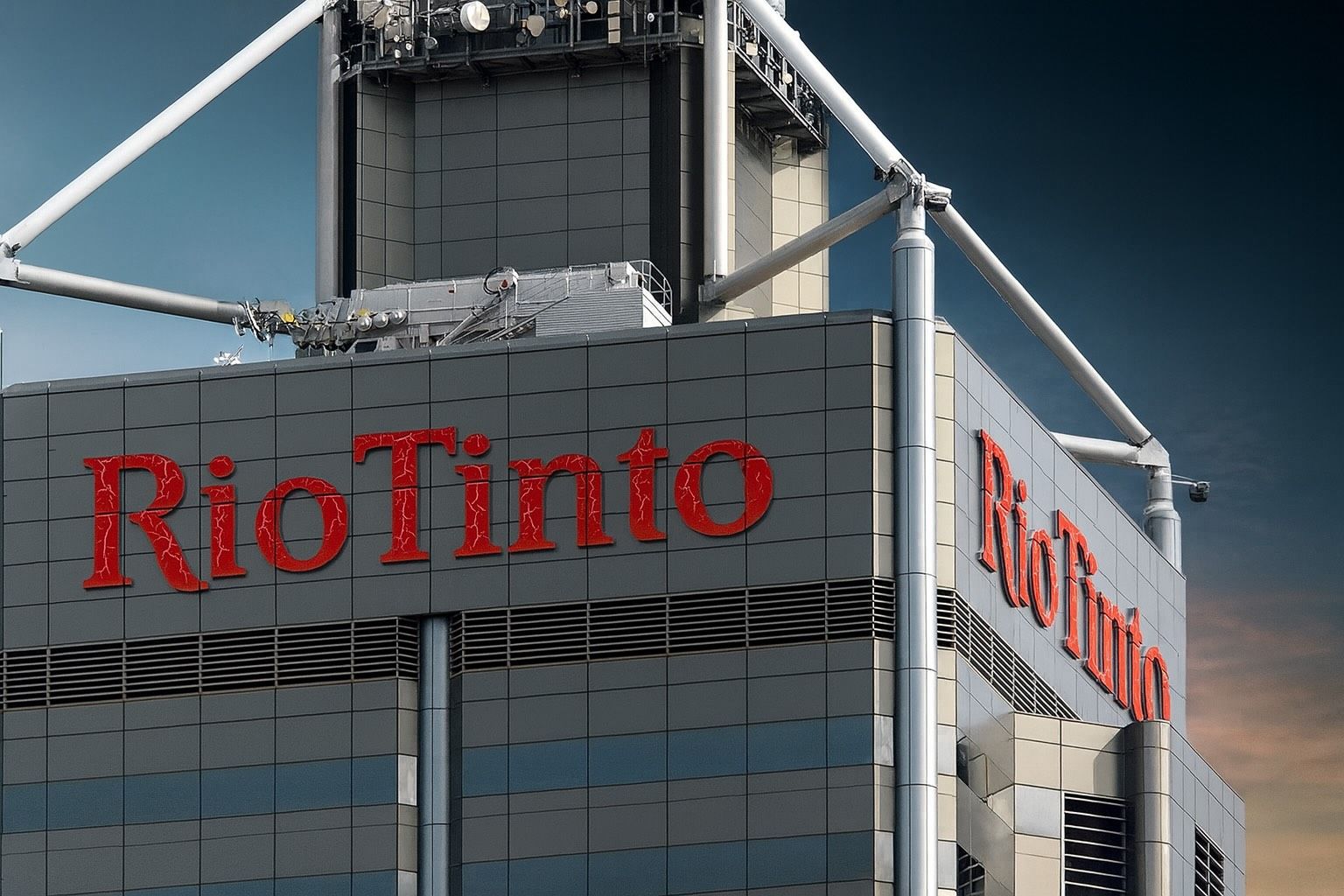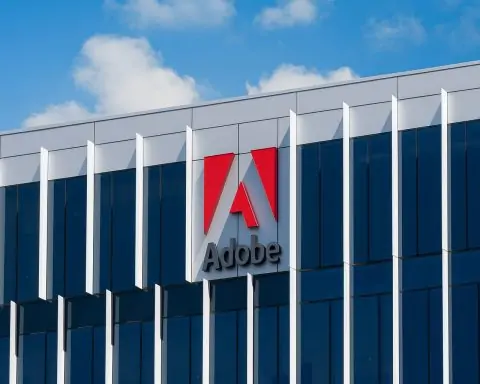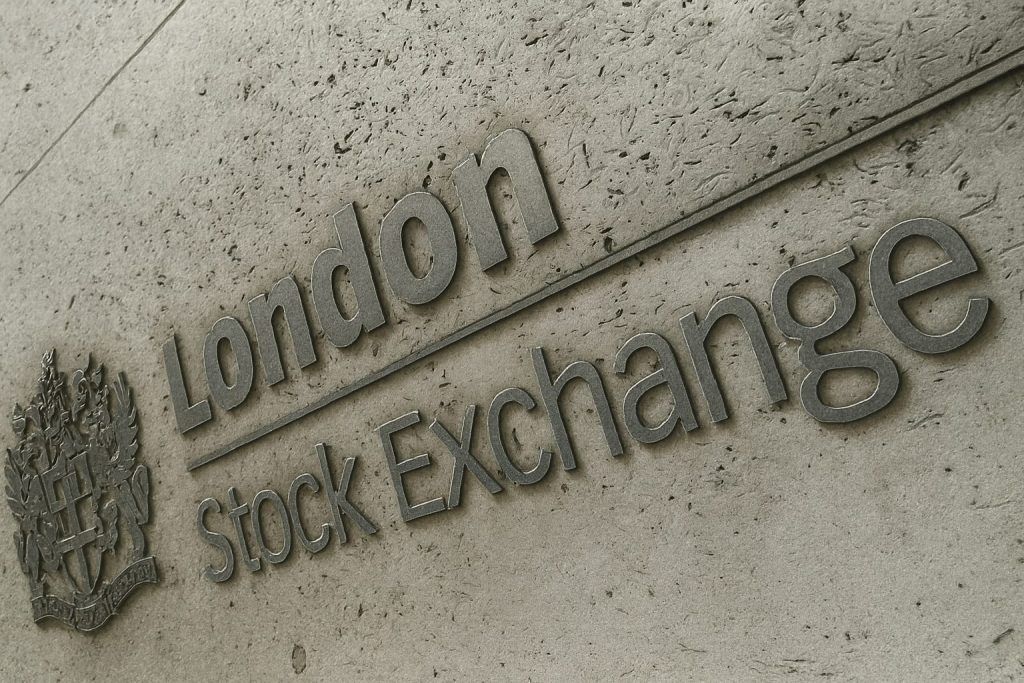Rio Tinto plc’s London‑listed shares traded modestly higher on Thursday, 20 November 2025, as investors digested a fresh wave of “green iron” news, a major Guinea iron‑ore update and mixed but active institutional fund flows into the stock.
Rio Tinto share price today (LSE:RIO)
As of the latest data on 20 November 2025, Rio Tinto plc (ticker: RIO on the London Stock Exchange) is trading slightly up on the day:
- Last traded price: around 5,340–5,345p per share
- Day change: roughly +34p, or about +0.6% compared with Wednesday’s close of 5,307p [1]
- Intraday range: approximately 5,336p (low) to 5,393p (high) [2]
- 52‑week range: about 4,025p – 5,565p, so the stock is trading in the upper band of its 12‑month trading corridor [3]
On valuation:
- Market capitalisation (London line): roughly £67–68 billion, based on LSE data and today’s price [4]
- Trailing P/E ratio: around 11x earnings, according to recent statistics for the London listing [5]
- Dividend yield: in the region of 5–5.5%, based on current payout and share price [6]
For comparison, Rio Tinto’s US‑listed ADR (NYSE: RIO) is trading near $69.4 in early US trade, down a fraction on the day, reflecting the same underlying business in a different currency and line of stock.
Note: Real‑time share prices can differ slightly between data providers and are typically subject to a short delay. Figures above are approximate snapshots from reputable market data sources on 20 November 2025.
Market backdrop: miners track iron ore and copper higher
Today’s modest rise in Rio Tinto’s UK share price comes against a supportive backdrop for global mining stocks.
In Australia, where Rio Tinto is dual‑listed, a Reuters report shows the S&P/ASX 200 was up about 0.7%, with miners gaining nearly 1%. Sector heavyweights BHP and Rio Tinto both advanced in Sydney trading by roughly 0.6% and 0.5%, respectively, as iron ore and copper prices moved higher. [7]
That positive tone in Rio’s Australian line typically feeds into sentiment around the London‑listed shares, given both markets are pricing the same global portfolio of iron ore, aluminium, copper and other assets.
Commodity‑wise, the key narrative remains:
- Iron ore: Demand expectations tied to Chinese steel production and infrastructure remain central to Rio Tinto’s earnings power.
- Copper: Still seen as a critical metal for electrification and the energy transition, strengthening the investment case for Rio’s copper growth pipeline. [8]
Big strategic story today: green iron partnership with Calix
One of the most important themes around Rio Tinto this week – and still very much in focus today – is its partnership with Australian technology company Calix to develop low‑emissions “green iron”.
What has Rio Tinto announced?
On 17 November 2025, Rio Tinto confirmed it had signed a Joint Development Agreement with Calix to support construction of the company’s Zero Emissions Steel Technology (Zesty™) demonstration plant in Western Australia. [9]
Key points from Rio Tinto and subsequent specialist coverage:
- Rio Tinto plans to contribute more than A$35 million (around US$23 million) in a mix of cash and in‑kind support for the Zesty demonstration plant. [10]
- The plant, to be built at Kwinana near Perth, is designed to produce around 30,000 tonnes per year of hydrogen direct‑reduced iron (DRI) or hot‑briquetted iron (HBI). [11]
- Zesty uses electric heating and hydrogen reduction and is compatible with lower‑grade Pilbara iron ore, potentially enabling lower‑emission steelmaking using Rio Tinto’s existing resource base. [12]
- The Western Australian state government has publicly backed the project as part of its strategy to build a green iron industry and diversify the state’s iron‑ore‑dominated economy. [13]
Coverage today in Australian Manufacturing highlights that Calix has formally “secured Rio Tinto backing” for the green iron demonstration plant, underlining Rio’s role as a cornerstone industrial partner rather than just a passive investor. [14]
BioIron paused, focus shifts to hydrogen‑based tech
Several outlets also note that Rio Tinto is pausing its earlier BioIron pilot, which used biomass‑based iron reduction, in favour of backing Calix’s hydrogen‑driven Zesty process. [15]
For investors, the message is twofold:
- Rio is doubling down on hydrogen‑based technology, seeking a pathway to greener steel that could be more scalable and compatible with intermittent renewables.
- The company is rationalising R&D, shelving one technology in favour of another that appears closer to commercial demonstration and better supported by government funding (including an ARENA grant for Calix). [16]
This green‑iron story feeds directly into Rio Tinto’s longer‑term ESG and valuation narrative – a key factor behind continued institutional interest (and debate) in the shares.
Simandou spotlight: Guinea’s iron‑ore megaproject back in the headlines
Another big theme linked to Rio Tinto today is the Simandou iron‑ore project in Guinea, one of the world’s largest untapped high‑grade deposits.
A syndicated Reuters article carried by Zawya and TradingView, dated 20 November 2025, highlights how Guinea is “banking on China” to leverage an iron‑ore mining boom, centred on the Simandou integrated project. [17]
Notable details from the report:
- The Simandou deposit contains around 3 billion tonnes of iron ore and is now part of a US$20 billion integrated project including mines, a 650km dual‑track railway and a deep‑water export port. [18]
- Three consortiums are collaborating on the infrastructure; Chinese groups Baowu and Chinalco, alongside Rio Tinto, will jointly run the integrated project, while the Guinean government retains a 15% stake. [19]
- Guinea’s authorities believe Simandou could lift the country’s GDP by up to 30% over time, according to IMF assessments cited in the article. [20]
For Rio Tinto shareholders, this matters because Simandou:
- Adds long‑life, high‑grade iron‑ore to Rio’s development pipeline.
- Offers diversification away from an almost exclusive reliance on the Pilbara in Western Australia.
- Could support premium pricing in a world more focused on lower‑carbon steel, where high‑grade ore is at a premium.
Today’s renewed coverage of Simandou reinforces the view that Rio Tinto’s iron‑ore story is not just about current Pilbara production, but also about multi‑decade, high‑grade growth options.
Institutional flows: hedge funds rotate in and out of Rio Tinto
20 November has also brought a cluster of 13F‑based institutional holding updates, mainly for Rio Tinto’s NYSE‑listed ADR, but still relevant for overall sentiment.
According to MarketBeat:
- Accordant Advisory Group Inc has disclosed a new position of 22,166 Rio Tinto shares, worth about US$1.3 million at the time of the filing. [21]
- Foundations Investment Advisors LLC reported a new stake of 5,524 shares, valued around US$322,000, and highlighted that Rio Tinto carries a “Moderate Buy” consensus rating with an average analyst target price of about US$73, modestly above the current ADR price near US$69–70. [22]
- In contrast, Catalyst Funds Management Pty Ltd has cut its holding by 82.1%, trimming its position to 43,016 shares (worth roughly US$2.5 million) after selling nearly 198,000 shares in the second quarter. Rio Tinto still represents about 0.7% of that fund’s portfolio. [23]
These filings suggest net active repositioning rather than a one‑way stampede. Some funds are building positions, attracted by Rio’s yield and exposure to iron ore, copper and green‑metal themes; others are locking in gains after the stock’s double‑digit advance over recent months, as highlighted by multiple valuation‑focused pieces earlier in November. [24]
Earlier in the week: Yarwun alumina cuts and renewable power deals
While not dated specifically today, several recent operational announcements remain fresh in investors’ minds and help explain why Rio Tinto’s share price is trading close to the upper end of its 52‑week range.
Yarwun alumina refinery: production cut to extend life
Rio Tinto has announced that it will cut output at the Yarwun alumina refinery in Queensland by about 40% from October 2026, aiming to extend the plant’s operational life to 2035. [25]
Key takeaways from company statements and media coverage:
- Instead of building an expensive second waste facility, Rio plans to curtail production to match the remaining capacity of existing tailings infrastructure. [26]
- The move gives the company around four more years to explore options for plant modernisation, life extension or alternative waste solutions, while maintaining supply to customers. [27]
Investors may view this as a capital‑discipline and risk‑management decision – sacrificing some future volume in exchange for a longer asset life and reduced upfront capex.
Low‑carbon aluminium and renewable energy
Rio Tinto has also been highlighting its broader decarbonisation push:
- ELYSIS breakthrough: The ELYSIS joint venture between Alcoa and Rio Tinto recently achieved a commercial‑scale inert‑anode smelting cell breakthrough at a Quebec smelter, eliminating direct greenhouse‑gas emissions from the aluminium smelting process and producing oxygen instead. [28]
- Kennecott wind power deal: At its Kennecott copper operations in the US, Rio Tinto has signed a new agreement to purchase about 78.5MW of renewable power from TerraGen’s Monte Cristo I wind project, strengthening its US renewable energy portfolio. [29]
Taken together with the green‑iron initiative, these moves reinforce the narrative that Rio is increasingly positioning itself as a “transition metals and low‑carbon production” leader, not just a legacy bulk‑miner.
How Rio Tinto looks after today’s move
After today’s modest rise, Rio Tinto’s London shares are:
- Trading close to, but below, their 52‑week high, leaving some headroom if commodity prices and earnings stay supportive. [30]
- Valued at around 11x trailing earnings, a discount or in line with many global diversified miners, and offering a mid‑single‑digit dividend yield. [31]
- Supported by a pipeline that includes Simandou iron ore, copper growth, and decarbonisation‑linked projects like Zesty green iron and low‑carbon aluminium. [32]
Of course, risks remain: Rio Tinto is heavily exposed to China’s steel demand, regulatory and political risk in jurisdictions like Guinea, and the execution risk of new technologies such as hydrogen‑based ironmaking.
Nothing in today’s trading action changes those fundamentals dramatically, but the combination of supportive commodity prices, green‑technology partnerships and an active institutional shareholder base helps explain why the Rio Tinto share price in the UK is holding up well on 20 November 2025.
References
1. www.investing.com, 2. www.investing.com, 3. www.investing.com, 4. www.londonstockexchange.com, 5. finance.yahoo.com, 6. www.investing.com, 7. www.livemint.com, 8. www.proactiveinvestors.co.uk, 9. www.riotinto.com, 10. www.esgtoday.com, 11. www.miragenews.com, 12. www.miragenews.com, 13. www.miragenews.com, 14. www.australianmanufacturing.com.au, 15. finance.yahoo.com, 16. www.esgtoday.com, 17. www.tradingview.com, 18. www.tradingview.com, 19. www.tradingview.com, 20. www.tradingview.com, 21. www.marketbeat.com, 22. www.marketbeat.com, 23. www.marketbeat.com, 24. finance.yahoo.com, 25. www.mining.com, 26. www.mining.com, 27. www.mining.com, 28. www.riotinto.com, 29. www.riotinto.com, 30. markets.ft.com, 31. finance.yahoo.com, 32. www.tradingview.com







